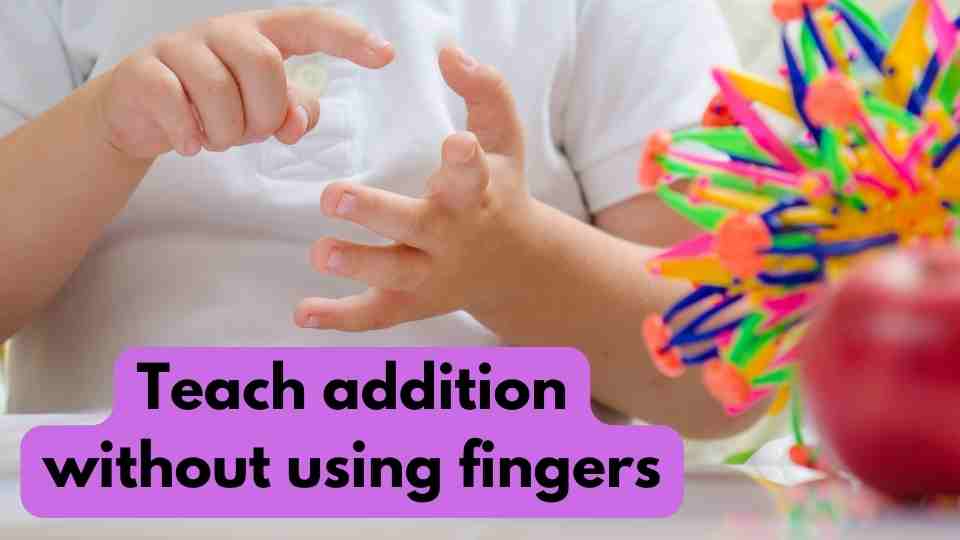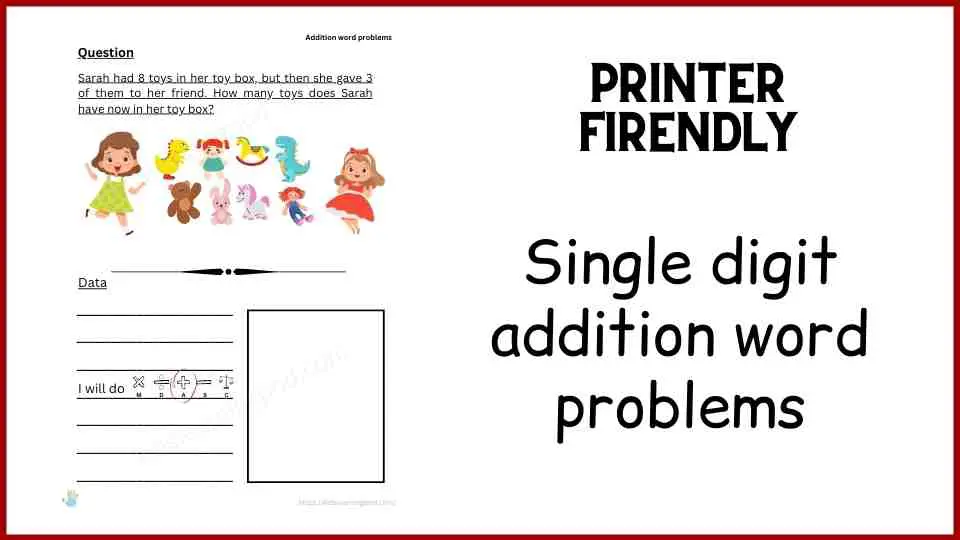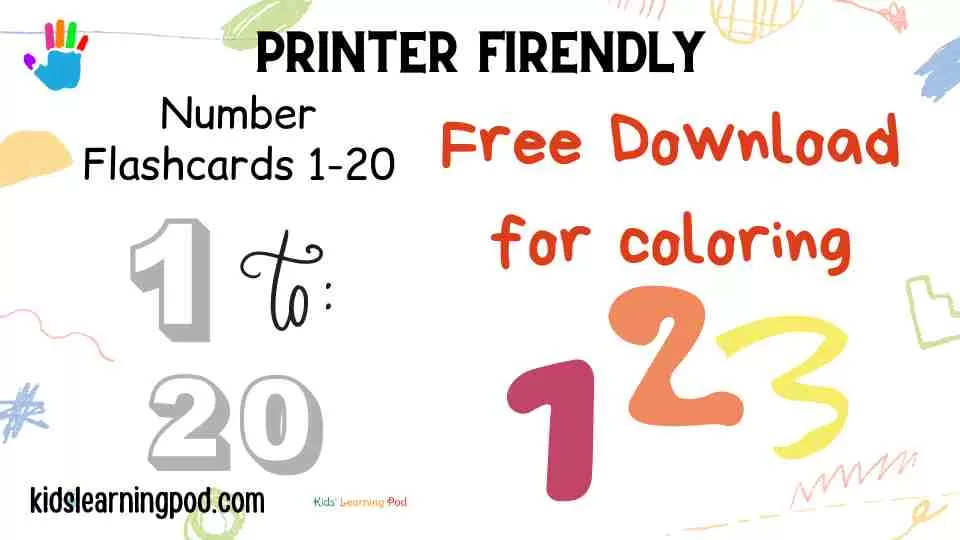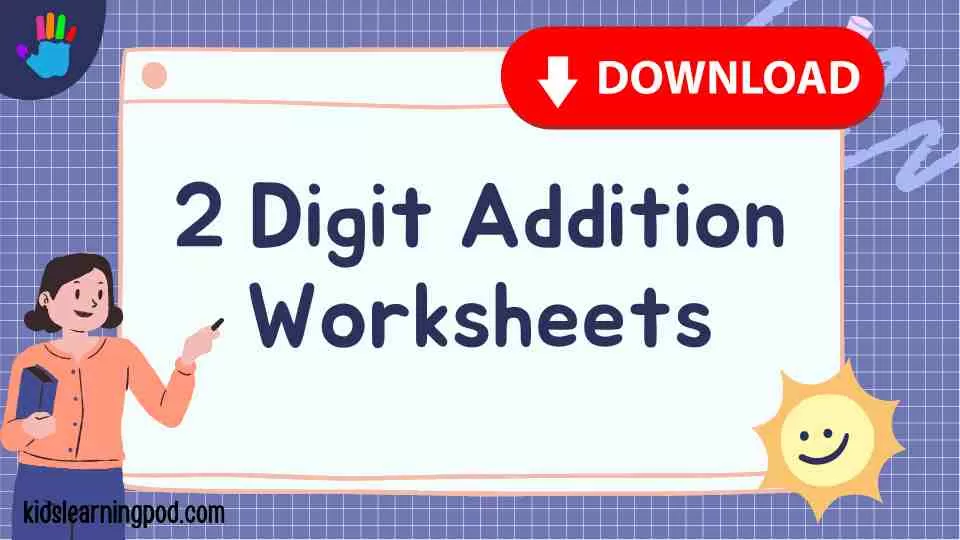Let’s Count and Match Numbers 1-20
Counting and matching numbers 1-20 is a crucial building block for children’s mathematical development. It lays the foundation for higher-level math skills and helps children develop number sense, which is an understanding of the quantity and relationships between numbers.
By learning to count and match numbers 1-20, kindergarten students learn to develop an understanding of numbers that will stay with them for a lifetime.
Counting using objects and pictures to combine counting and matching to reinforce the concepts, we’ve got you covered with everything you need to help your child master numbers 1-20 in a fun and interactive way. So, buckle up, and get ready to embark on an exciting journey to number mastery!
Importance of number recognition and counting for children
As a parent or teacher, you know that teaching young kids to recognize and count numbers in the early school year is a crucial part. But, let’s face it – count and match numbers can be a bit boring for kids.
Kids learn through number recognition and counting task with hands-on activities. Interactive games such as finding a correct number or count and match worksheets in the classroom will keep your students engaged and excited about learning.
Count and Match along with number recognition are fundamental skills that play a crucial role in a child’s early development. Here are some of the key reasons why it is important for children to learn these skills:
Basic Math Skills
Number recognition, Count, and match the correct number are the building blocks for more advanced math skills such as addition, subtraction, multiplication, and division. Children who have a solid understanding of numbers will have a better foundation for future math learning.
Problem-Solving
Count and match number help children develop critical thinking skills and the ability to solve problems. By practicing children learn to think logically and systematically, which is essential for future problem-solving.
Cognitive Development
Number recognition and counting are linked to the development of memory and attention. Children who practice these skills regularly will improve their cognitive abilities and become more focused and organized.
Confidence and Self-Esteem
Learning to count and match numbers can be a great source of confidence and self-esteem for children. As they master these skills, they feel proud of their accomplishments and gain a sense of independence and control.
Download Free worksheets at the end of post!
Counting objects and Match worksheets
Counting is the process of identifying and naming a sequence of numbers in order. The basic idea behind counting is to associate a number with a group of objects or items. For example, if a child has three toys, they can count them by saying “one, two, three”. This helps them understand the relationship between numbers and the quantities they represent.
To make the concept of counting more meaningful for children, it’s important to provide hands-on experiences that allow them to physically count objects or items. This could be as simple as counting fingers, toys, or items in their environment. By practicing counting in this way, children will gradually develop their understanding of the concept and be able to count larger numbers with ease.
Match worksheets can also be used to demonstrate counting. For example, you can provide a set of pictures of animals, fruits, or other objects and ask the child to count them and circle the correct number. The pictures can be presented in a book, on flashcards, or on a poster. By counting the objects, children will develop their ability to associate numbers with the quantities they represent.
To make the experience more interactive, you can ask the child to match each picture with a corresponding number card. This will help reinforce the concept of counting and make it more memorable.
Count and Matching Learn Now
Learn through activities and games
Activities and games are a great way to keep children engaged and excited about learning. There are many fun and interactive games that can be used to reinforce the concept of counting, including:
Counting Jars
Fill several jars with different numbers of objects such as beans, marbles, or coins and ask the child to count the items in each jar. Preschool kids will love such activities.
Number Matching Games
Create a set of cards with numbers and corresponding pictures. Ask the child to count and match the number card with the corresponding picture.
Counting songs and rhymes
Incorporate counting into songs and rhymes on number names that children enjoy. For example, you can sing “Five Little Monkeys Jumping on the Bed” or “One, Two, Buckle My Shoe”.
Memory Match Game
Create a set of number and picture cards, and place them face down on a table. Ask the child to flip over two cards at a time and try to find the ma
Spot the Difference
Provide two sets of pictures with slight differences and ask the child to identify the differences. For example, one picture might have one more item than the other.
Number Puzzle
Create number puzzles by cutting out numbers and their corresponding pictures and ask the child to match the pieces together.
Counting Scavenger Hunt
Hide objects around the room and ask the child to search and count them. This will make learning in a fun and exciting adventure.
Count and Match with Everyday Tasks
Incorporate counting and matching into everyday tasks, such as cooking, shopping, or cleaning, to provide practical and engaging opportunities to practice the skills.
Count and Match with Art and Crafts
Create projects that involve counting and matching, such as making a collage with a specific number of items or decorating a picture with stickers or stamps.
By incorporating these fun activities and games into the learning process, children will be more motivated to practice counting and will develop a love for learning. These activities also provide opportunities for children to practice counting in real-life situations, which will help them understand the concept in a more meaningful way. Furthermore, playing games and having fun with counting will help children develop their memory, attention, and critical thinking skills.
Concept of matching numbers
Understanding the concept of matching numbers is an important step in helping preschoolers to master numbers. Matching numbers involves connecting a number with its corresponding quantity or representation.
For example, a child can search and circle the number “3” with three objects or three pictures. This helps the child understand the relationship between numbers and the quantities they represent.
It’s also important to provide opportunities for children to practice matching numbers in real-life situations. For example, you can ask the child to count and match the number of chairs at the table, the number of fruits in a basket, or the number of toys in a box. This will help the child understand the practical applications of matching numbers and will make the learning experience more meaningful and memorable.
Practical Examples of counting objects
Using real-life situations to count and match numbers provides children with practical and meaningful experiences that help reinforce the concepts of counting and matching.
These everyday activities enhance kids learning. Some examples of real-life situations to practice counting and matching include:
Counting Money
Children can practice counting coins and matching the number with a corresponding picture or number card.
Count and Match Food
When cooking or baking, children can count ingredients and match the number with a corresponding picture or number card.
Count and Match Clothes
Children can practice counting their clothing items and matching the number with a corresponding picture or number card.
Count and Match at the Store
While shopping, children can visualize the grocery store and count items in the line or in their baskets. By using real-life situations, children will be able to see the practical application of counting and matching and understand their significance in our everyday lives.
Furthermore, incorporating counting and matching into real-life situations provides children with opportunities to practice the skills in a meaningful and interactive way, which will help them to retain the information better and develop a deeper understanding of the concepts.
Download free printable kindergarten count and match worksheets and take a print for your little one.
Download Worksheets
Kindly Allow Pop ups to let the Download Begin!





